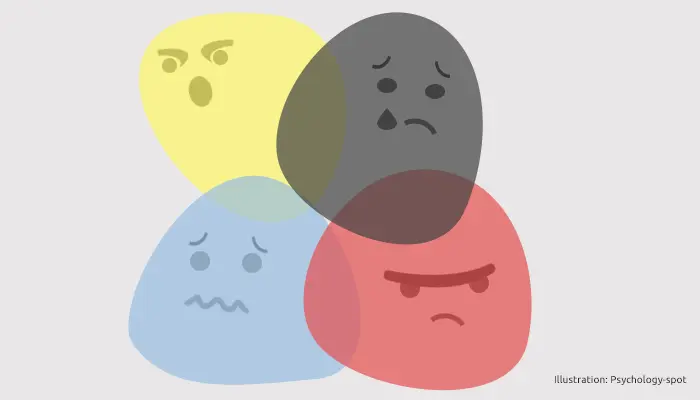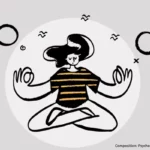
We all have a negativity bias and we often succumb to its influence. It is as if our brain has a magnet to fix the negative experiences while easily forgetting the positive ones. For example, you may remember exactly where you were and what you were doing when the September 11, 2001 attack occurred, but you may not remember what you were doing the following month. That negativity bias helps keep us safe, but it can also sink us into pessimism. That is why it is important to learn to recognize it and know how to manage it.
What is the negativity bias?
Negativity bias refers to our propensity to pay attention, learn, and use negative rather than positive information. It is a kind of asymmetry in our way of processing events and understanding the world, which makes negative stimuli elicit faster and more prominent responses than positive ones.
The negativity bias may explain why we remember insults more than compliments and spin them more in our minds. It also explains why we react more intensely to adverse events or why we pay more attention to negative news than positive ones. This bias even explains why, although we experience several positive events throughout the day, at night we will tend to focus on the only bad thing that happened.
This tendency to negativity is scientifically proven. A study carried out at the University of Michigan revealed that negative news tends to dominate the media because generates more psychophysiological reactions in readers, who tend to be more attentive to negative news than positive ones.
We have a hyper-reactive brain to the negative
An experiment carried out by the psychologist John Cacioppo, verified the tendency of our brain to react more intensely to the stimuli that it considers negative. In his study, he showed a group of people a series of images that aroused positive, negative or neutral feelings. Meanwhile, he was recording electrical activity in the cerebral cortex, which reflects the magnitude of information processing.
He appreciated that stimuli that generate negative emotions, such as fear or anger, produced an increase in electrical activity in the brain. In practice, our brain routinely evaluates the risks that people and situations may pose for safety reasons. Negative events capture our attention more than positive ones and generate greater activation at the brain level.
Our ability to pay more attention to bad news is likely an evolutionary adaptation to keep us out of harm’s way as we must be able to pick out threat signals quickly to avoid them.
The problem begins when that negative bias spreads to all spheres of life, feeding a pessimistic view or making us believe that the world is a dangerous and hostile place where we cannot lower our guard for a moment. So it is not difficult to fall into anxiety.
In fact, a study carried out at the University of Lübeck found that “The formation of beliefs related to oneself is surprisingly negatively biased in situations that could be opportunities for improvement”. That means our tendency to negativity also takes away from us opportunities for growth and learning.
Magic Ratio: How much positivity do we need to make up for the negativity bias?
We can compensate for the negativity bias by focusing on the positive things to achieve a more balanced perspective. However, due to the disproportionate weight that our brain places on negative events, this balance does not mean a 50-50 ratio.
John Gottman and Robert Levenson tried to find out what the “magic ratio” is. To do this, they analyzed hundreds of couples. They carefully recorded the amount of time the couples spent fighting or interacting positively. They found that the most balanced and satisfied couples with their relationship, are those who know how to measure the amount of positivity and negativity.
The magic ratio is five to one. In other words, must occur five times as many positive feelings and interactions in a relationship to counteract a negative event. That ratio applies to other spheres of our life. This explains why the occasional positive experiences, like a birthday party or a trip, are pleasant, but they do not have the necessary impact on our brain to cancel the negativity bias of many small negative events. We need to make sure we have frequent little positive experiences to tip the balance toward happiness.
In addition to savoring the positive moments, to maximize their impact on our brain it is also important to learn to stop the negative inner dialogue. We need to start paying more attention to the kinds of thoughts that go through our minds.
After an event, even a positive one, we may focus on the small details that went wrong or were not perfect. When those thoughts kick in, we must apply cognitive defusion techniques to prevent them from harming us.
It is also convenient that we learn to reassess the situation. If we realize that we are interpreting something negatively or only focus on the negative aspects, we must refocus our mind to look for the positive. Of course, it’s not about ignoring potential dangers or wearing pink glasses, it’s just about developing a more balanced vision to offset the negativity bias that we all have.
Sources:
Soroka, S. et. Al. (2019) Cross-national evidence of a negativity bias in psychophysiological reactions to news. PNAS; 116 (38): 18888-18892.
Müller-Pinzler, L. et. Al. (2019) Negativity-bias in forming beliefs about own abilities. Nature: Scientific Reports; 9: 14416.
Norris, C. J. (2019) The negativity bias, revisited: Evidence from neuroscience measures and an individual differences approach. Social Neuroscience; 16: 68-82.
Gottman, J. & Levenson, R. (2002) A Two-Factor Model for Predicting When a Couple Will Divorce: Exploratory Analyses Using 14-Year Longitudinal Data. Family Process; 41(1): 83-96.
Cacioppo, J. T. et. Al. (1998) Negative Information Weighs More Heavily on the Brain. Journal of Personality and Social Psychology; 75(4): 887-900.



